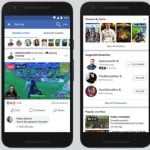
It’s time to drop your preconceived notions about millennials right here at the beginning of this article. You may think you know who millennials are — maybe you are one yourself, or you have a child who falls into this category – but you’re probably sorely mistaken.
Stereotypes offer us valuable and efficient mental shortcuts that can be used to quickly identify someone and make reasonable assumptions about who they are, how they act, and what they want. But a stereotype rarely tells the whole story. This is certainly true with millennials.
If you want to grow your business and engage millennial consumers, you must ditch your fallacious thinking and seek to understand who this dynamic group really is. In doing so, you’ll be forced to confront the reality that this valuable portion of the consumer marketplace is rarely predictable. Yet, despite their capricious nature, most millennials want and expect similar things from the brands they interact with.
Contents
Who are Millennials?
Before digging into the desires and expectations of millennials, let’s set the bar and make sure we have a consistent understanding of who this group is.
According to MillennialMarketing.com, millennials are those born between 1977 and 2000. They make up roughly 25 percent of the U.S. population and account for 21 percent of consumer discretionary purchases.
While most people think of millennials as young, reckless teenagers, the reality is that this generation is maturing. Roughly one out of every four millennials is a parent and 53 percent of millennial households have children.
What Millennials Want
Now that we have a little better idea of who millennials are – at least in terms of demographics – it’s time to focus on their needs, wants, desires, and expectations as they pertain to their interactions with brands.
Despite being an eclectic group, you’ll find that almost every millennial shares the following desires:
1. Convenience
Millennials have grown up in a world that emphasizes convenience. Between fast food, video streaming, personalized social media feeds, and the ability to Google any question or concern in real-time, they’ve been raised to think about everything in terms of how fast, efficient, and available it is. Businesses that recognize this desire are making it a priority to deliver convenience in fresh, creative ways.
If you want proof of the desire for convenience, look no further than the current push for same-day grocery delivery. As MarketBeat reports, Walmart is currently expanding its same-day online grocery delivery service to 100 metro areas – covering roughly 40 percent of U.S. households – by year-end. The hope is to keep pace with Amazon, which has already leveraged its purchase of Whole Foods Market to offer Prime customers in select markets free two-hour delivery.
If millennials are willing to outsource and automate something as basic as shopping for groceries, you can bet they’re looking for a more convenient way to purchase or consume your products. Finding a way to satisfy this desire will yield dividends.
2. Choices
Millennials have also been raised in a world with choices. They log into Netflix and have thousands of options to choose from. They look for a specific product online and can compare choices from a number of different companies. When it comes to buying a product, they have nearly a dozen different ways to pay.
Choices make the consumer feel like they are in control. If you want to compete for millennial customers, you need to offer choices in some capacity. This will look different depending on the industry you’re in, but is necessary in every niche.
3. Experiences
Past generations have been hyper-focused on buying “things.” Millennials are more interested in buying experiences. As millennial entrepreneur Taylor Smith tells NBC, “We aren’t spending our money on cars, TVs and watches. We’re renting scooters and touring Vietnam, rocking out at music festivals, or hiking Machu Picchu.”
The pursuit of experiences over things has less to do with the experience itself and more to do with being recognized (more on that below). However, the root cause doesn’t matter as much as the tendency itself.
If you sell physical products, you need to look past the item itself and find a way to tell a story or paint an experience. Some companies accomplish this by aligning their brand with social causes, while others host or sponsor local events. The key is to do something that brings people together and allows them to bond.
4. Budget-Friendliness
Millennials are notoriously bad at managing their money. Many of them have also been victimized by the student loan crisis (which some would say borders on predatory lending). Either way, they don’t exactly have a ton of cash to spend.
Not only do millennials have tons of debt – including an average of $40,000 in student loans – but they also don’t make a lot. The average salary for a millennial is less than $35,000. And because they spend more per year on groceries, gas, dining out, and cell phone service than older generations, they have a very limited supply of money to spend on other things – i.e. the products you’re selling.
Understanding this, businesses that offer budget-friendly options, cheaper versions, and pay-as-you-go services tend to outperform premium brands with this demographic.
5. Belonging
As is the case with anyone, millennials seek belonging above all else. They want to fit in and will do whatever it takes to connect with people and causes.
Toms Shoes is the perfect example of a brand that was able to tap into this desire for belonging and monetize it in a powerful way. What started as a unique business model that made it easy for socially conscious millennials to feel like they were making an impact, quickly turned into something larger. Purchasing a pair of Toms Shoes became a status symbol – a proof of belonging.
“Suddenly, the one-for-one model wasn’t just another stodgy cause marketing program. One-for-one became a new category of social action, where the product becomes a badge of honor,” entrepreneur Bridget Croke says. “With this in mind, we can treat behavior change like an innovative product launch, where we target early adopters first and use their influence to make that behavior feel like the default behavior in their community of peers.”
6. Recognition
Some have dubbed millennials “Generation Me.” While it might not be an endearing title, it’s hard to debate the fact that millennials are more narcissistic than previous generations. Individualism is huge right now; this has led to a desire to be recognized. Social media is a driving force behind this.
How many times have you seen someone post an Instagram photo of a trip they took six months ago with a comment that says something like, Take me back? This is simply an excuse to post another picture that drives recognition and status. As some would say, it’s a “humble-brag.”
Millennials love humble-brags and businesses can leverage this to increase exposure and drive brand loyalty. By giving out rewards and memberships, offering social media contests, and tapping influencers, brands can appeal to narcissism in ways that haven’t been nearly as effective in decades past.
Reach Millennials Where They Are
The consumer spending power and influence millennials have in the marketplace is growing by the day. A failure to understand and engage this segment on their terms will result in unnecessary friction and pushback.
Now’s the time to really hone in on your target market and adjust, tweak, and optimize your marketing strategies and product offerings to align with their preferences. In doing so, you’ll find it easier to penetrate what is otherwise a highly misunderstood generation.
[“Source-smallbiztrends”]


